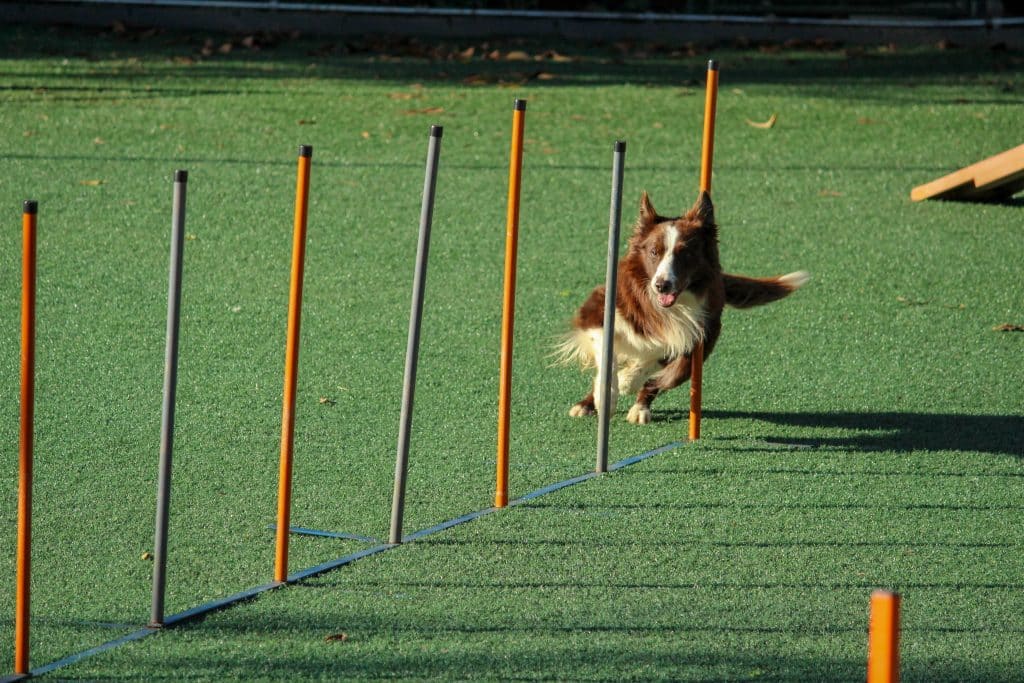Are you struggling with behavioral issues with your furry friend? Look no further! This article provides effective training techniques that will help you address and overcome behavioral issues in your dog. From barking and chewing to aggression and separation anxiety, these techniques will equip you with the necessary tools to create a harmonious and well-behaved canine companion. Get ready to transform your dog's behavior and enhance your bond through the power of training.

This image is property of images.unsplash.com.
Understanding Behavioral Issues in Dogs
Behavioral issues in dogs can be a common occurrence for many pet owners. It is important to understand these issues in order to address them effectively. Some of the most common behavioral issues in dogs include aggression towards humans or other animals, fear and anxiety, excessive barking, digging and destructive behavior, jumping up on people, and pulling on the leash. Each of these issues can be distressing for both the dog and the owner, but with the right training techniques, they can be managed and resolved.
Causes of Behavioral Issues
There can be various causes behind behavioral issues in dogs. It is important to identify the underlying factors in order to address the problem effectively. Some common causes include lack of socialization, previous trauma or abuse, separation anxiety, fear or phobias, and medical conditions. Understanding the root cause of the issue will help in choosing the appropriate training method and implementing the necessary behavior modification techniques.

This image is property of images.unsplash.com.
The Importance of Addressing Behavioral Issues
Addressing behavioral issues in dogs is crucial for their well-being and the safety of those around them. Unresolved behavioral issues can lead to aggression or unhealthy behaviors that can pose a risk to both the dog and others. By addressing these issues, you can provide a better quality of life for your dog and create a harmonious environment for everyone. Additionally, well-behaved dogs are more likely to receive positive attention and socialization opportunities, enhancing their overall happiness and confidence.
Choosing the Right Training Method
When it comes to training dogs with behavioral issues, it is essential to choose the right training method. Different dogs respond differently to various techniques, so finding the approach that works best for your dog is important. Here are some popular training techniques:
Positive Reinforcement Training
Positive reinforcement training involves rewarding desired behaviors with treats, praise, or playtime. This method focuses on reinforcing good behavior rather than punishing bad behavior, creating a positive association with desired actions.
Clicker Training
Clicker training is a form of positive reinforcement that uses a distinct sound, usually from a handheld device called a clicker, to mark desired behaviors. This method enables clear communication between the trainer and the dog, making it easier to reinforce specific actions.
Reward-Based Training
Similar to positive reinforcement training, reward-based training emphasizes rewarding correct behaviors. This technique often involves using treats, toys, or other rewards to motivate and encourage dogs to exhibit desired behaviors.
Correction-Based Training
Correction-based training, also known as aversive training, involves using gentle corrections or punishments to discourage undesirable behaviors. This method requires caution and should only be done under the guidance of an experienced trainer to ensure it is used appropriately and effectively.
Balanced Training
Balanced training combines elements from various training methods to address behavioral issues. It focuses on using positive reinforcement to encourage desired behaviors while incorporating corrections or punishments for unwanted behaviors. This approach aims to find a balance between motivators and deterrents to achieve desired outcomes.

This image is property of images.unsplash.com.
Creating a Structured Training Routine
Establishing a structured training routine is crucial when dealing with behavioral issues in dogs. Consistency and repetition are key to reinforce positive behaviors and eliminate unwanted ones. Here are some essential aspects to consider when designing a training routine:
Establishing Clear Expectations
Clearly define the behaviors you expect from your dog. Be consistent with your commands and the desired response, and ensure everyone in the household follows the same rules. Clear expectations provide clarity for your dog, making it easier for them to understand what is expected of them.
Setting a Consistent Schedule
Consistency is vital in dog training. Establish a regular schedule for training sessions, feeding times, walks, and playtime. This consistency helps your dog develop a sense of routine and predictability, allowing them to feel secure and more receptive to training.
Using a Variety of Training Exercises
Engage your dog in a variety of training exercises to keep them mentally stimulated and prevent boredom. This could include obedience exercises, puzzle toys, scent games, or agility training. Providing a variety of training activities not only keeps them engaged but also helps reinforce the desired behaviors in different contexts.
Gradually Increasing Difficulty Levels
As your dog progresses in their training, gradually increase the difficulty level by adding distractions, such as other dogs or novel environments. This helps your dog generalize their training and respond reliably in different situations. Progressing at a steady pace ensures that your dog does not become overwhelmed and sets them up for success.
Basic Training Commands
Teaching your dog basic training commands is fundamental for their overall behavior and obedience. These commands establish a foundation for further training and can be used to manage behavioral issues. Here are some essential commands to teach your dog:
Sit
Teaching your dog to sit on command is a straightforward yet essential skill. It helps you establish control and manage various situations, such as preventing jumping up on people or greeting guests politely.
Stay
The "stay" command is particularly important for ensuring your dog's safety and obedience. It teaches them to stay in one place until you give them permission to move. This command comes in handy when crossing roads or preventing them from running off.
Lie Down
The "lie down" command is useful for calming anxious or excitable dogs. It teaches them to relax and settle down in a particular spot. This command can be helpful in situations where you need your dog to remain calm and composed.
Come
The "come" command is essential for recall, especially in potentially dangerous situations. Teaching your dog to come to you when called can prevent them from running off or getting into trouble.
Leave It
The "leave it" command teaches your dog to refrain from picking up or interacting with objects or food that they should not have. This command is crucial for their safety, preventing them from ingesting harmful substances or picking up dangerous objects.
Drop It
The "drop it" command is useful for preventing your dog from holding onto or chewing items they should not have. Teaching them to release objects on command helps prevent destructive behavior and potential harm to themselves or others.

Addressing Specific Behavioral Issues
Different behavioral issues require specific approaches and techniques to address effectively. Here are some common behavioral issues and strategies for dealing with them:
Aggression towards Humans
Aggression towards humans can be a serious behavioral issue. It is important to consult a professional dog trainer or behaviorist for assistance. They can help assess the underlying causes and develop a behavior modification plan tailored to your dog's specific needs.
Fear and Anxiety
Fear and anxiety can manifest in various ways in dogs. Gradual desensitization and counter-conditioning techniques can be effective in helping dogs overcome their fears or anxieties. Creating positive associations with the triggers and providing a safe and calm environment are key components of addressing these issues.
Excessive Barking
Excessive barking can be a nuisance and can also indicate underlying behavioral issues. Understanding the reason behind the barking, such as boredom, loneliness, territoriality, or fear, is important in addressing the problem. Providing mental and physical stimulation, as well as training alternative behaviors, can help reduce excessive barking.
Digging and Destructive Behavior
Digging and destructive behavior can result from boredom, frustration, or separation anxiety. Providing appropriate outlets for your dog's energy, such as puzzle toys, interactive games, or designated digging areas, can redirect their behavior and prevent destructive habits.
Jumping up on People
Jumping up on people is a common issue, especially in enthusiastic and energetic dogs. Teaching your dog to sit or offer an alternative behavior, such as shaking hands or lying down, can redirect their impulse to jump and promote better manners when greeting people.
Pulling on the Leash
Pulling on the leash can be frustrating and make walks unpleasant for both you and your dog. Using positive reinforcement techniques, such as rewarding your dog for walking politely beside you, can help address this issue. Additionally, using appropriate tools, such as front-clip harnesses or head halters, can aid in teaching your dog to walk on a loose leash.
Implementing Behavior Modification Techniques
Behavior modification techniques are essential for addressing and modifying unwanted behaviors in dogs. Here are some effective techniques:
Desensitization
Desensitization involves gradually exposing your dog to the trigger that elicits an undesirable response. By starting at a low intensity and incrementally increasing exposure, your dog can learn to tolerate and even become comfortable with previously feared or aversive stimuli.
Counter-conditioning
Counter-conditioning involves changing your dog's emotional response to a specific trigger from negative to positive. By associating the trigger with something your dog loves, such as treats or playtime, you can help your dog develop a positive association and reduce fear or anxiety.
Behavior Replacement
Behavior replacement focuses on teaching your dog an alternative behavior to replace the unwanted one. For example, if your dog jumps up on people, you can teach them to sit instead. By redirecting their attention and energy into a more desirable behavior, you can effectively address the issue.
Management Strategies
Management strategies involve implementing measures to prevent or minimize the occurrence of unwanted behaviors. This can include using baby gates or crates to limit access to certain areas, providing mental and physical stimulation, or using training aids such as head halters or muzzle training for safety purposes.

Socialization for Better Behavior
Socialization is a vital aspect of a dog's development and can significantly impact their behavior. Here are some key points to remember when socializing your dog:
Exposing Dogs to Various Environments
Expose your dog to different environments, both indoors and outdoors, to help them become comfortable and adaptable. This can include taking them to parks, beaches, cafes, or other public places where they can encounter a variety of sights, smells, and sounds.
Introducing Them to Different People and Animals
Introduce your dog to a diverse range of individuals, including different ages, genders, and ethnicities. Similarly, provide opportunities for your dog to interact with other dogs and animals in a controlled and positive environment. This exposure helps prevent fears or aggression towards unfamiliar people or animals.
Encouraging Positive Interactions
Encourage positive interactions during socialization by rewarding your dog for calm and appropriate behavior. Praise, treats, and playtime can all serve as positive reinforcements for desired behaviors. This helps your dog associate socialization experiences with positive outcomes.
Gradually Increasing Socialization Experiences
Start socializing your dog at a young age and gradually increase the intensity and complexity of socialization experiences over time. This gradual exposure helps build their confidence and allows them to adapt to new situations at their own pace.
Consistency and Persistence
Consistency and persistence are key when it comes to training and addressing behavioral issues in dogs. Here's why they are important:
Importance of Consistency in Training
Consistency in training provides clear expectations and reinforces desired behaviors. Dogs thrive on routine and repetition, so it is crucial to maintain consistency in your training methods, cues, and rewards. Inconsistency can confuse your dog and hinder their progress in learning and modifying behaviors.
Reinforcing Desired Behaviors Consistently
Consistently reinforcing desired behaviors helps your dog understand what is expected of them. Providing rewards, praise, or play every time they exhibit the desired behavior establishes a positive association and strengthens that behavior. Consistency in reinforcement helps your dog understand that certain behaviors lead to positive outcomes.
Dealing with Setbacks and Staying Persistent
Training dogs with behavioral issues can be challenging, and setbacks are to be expected. It is important to remain patient and persistent during these challenging times. Seek assistance from a professional trainer or behaviorist if needed, and continue working on the training exercises and behavior modification techniques. Consistent effort and patience will gradually lead to positive changes and improvements in your dog's behavior.
Seeking Professional Help
In some cases, professional help may be necessary to address complex behavioral issues in dogs. Here's what to consider when seeking assistance:
When to Consult a Professional Dog Trainer
If you are struggling to address your dog's behavioral issues or if the issues pose a potential safety risk, consider consulting a professional dog trainer or behaviorist. They have the expertise and experience to assess your dog's behavior, identify underlying causes, and recommend appropriate training techniques and behavior modification plans.
Choosing a Reputable Dog Trainer
When choosing a professional dog trainer or behaviorist, it is important to research and select someone with a good reputation and positive reviews. Look for trainers who use positive reinforcement methods and have experience dealing with the specific behavioral issues your dog is facing. Personal recommendations from trusted sources or veterinary professionals can also be helpful in finding a reputable trainer.
Working Together to Address Behavioral Issues
Collaboration between you, the dog owner, and the professional trainer or behaviorist is key to effectively addressing behavioral issues. Be open and honest about your dog's behaviors and follow the trainer's recommendations and training plans consistently. The trainer can guide you on how to implement training techniques correctly and tailor them to your dog's specific needs.
Patience and Understanding
Dealing with behavioral issues in dogs requires time, patience, and understanding. Here's why they are crucial:
Recognizing the Time and Dedication Required
Resolving behavioral issues in dogs is not a quick fix. It requires time, consistent effort, and dedication. Behavioral changes take time to solidify, and progress can sometimes be gradual. Remember to celebrate small victories and maintain a positive mindset throughout the training process.
Understanding Individual Dog's Needs
Every dog is unique, and understanding their individual needs is essential. Pay attention to your dog's temperament, triggers, and limitations. Modify training techniques and behavior modification plans accordingly to ensure they are effective and catered to your dog's specific requirements.
Building a Bond with Your Dog
Addressing behavioral issues through training provides an opportunity to strengthen the bond between you and your dog. Positive training methods not only promote desired behaviors but also foster trust, respect, and communication. Building a strong bond with your dog not only enhances their overall well-being but also facilitates successful training and behavior modification.
In conclusion, understanding and addressing behavioral issues in dogs requires a comprehensive approach that encompasses various training techniques, behavior modification strategies, socialization, consistency, patience, and possibly professional assistance. By investing time and effort into training your dog and addressing their behavioral issues, you can create a harmonious and happy environment for both you and your furry companion. Remember to always approach training in a friendly and positive manner, and enjoy the journey of building a strong and well-behaved dog.



4 comments
[…] reinforcement training techniques can be highly effective in promoting good mental health in dogs. These techniques focus on rewarding desired behaviors rather than punishing unwanted ones. […]
[…] your dog, such as puzzle toys or interactive treat-dispensing toys. Use treats as rewards during training sessions and when your dog exhibits desired behaviors. By using toys and treats in a positive and consistent manner, you’ll create a strong bond […]
[…] resource guarding behavior to prevent potential conflicts. This can involve implementing proper training to teach your dog appropriate behaviors and boundaries around resources. Seek professional guidance to effectively address and modify […]
[…] Are you curious about why dogs bark and how to effectively respond to this behavior? In the article "Understanding the Psychology of Barking: Insights into Why Dogs Bark and Effective Response Strategies," we delve into the fascinating world of canine psychology to shed light on this common behavior. By gaining a deeper understanding of why dogs bark, you will be equipped with the knowledge to respond in a way that promotes their well-being and maintains a harmonious relationship between you and your furry friend. Get ready to explore the intricate world of dog barking and discover effective strategies to address this behavior. […]
Comments are closed.